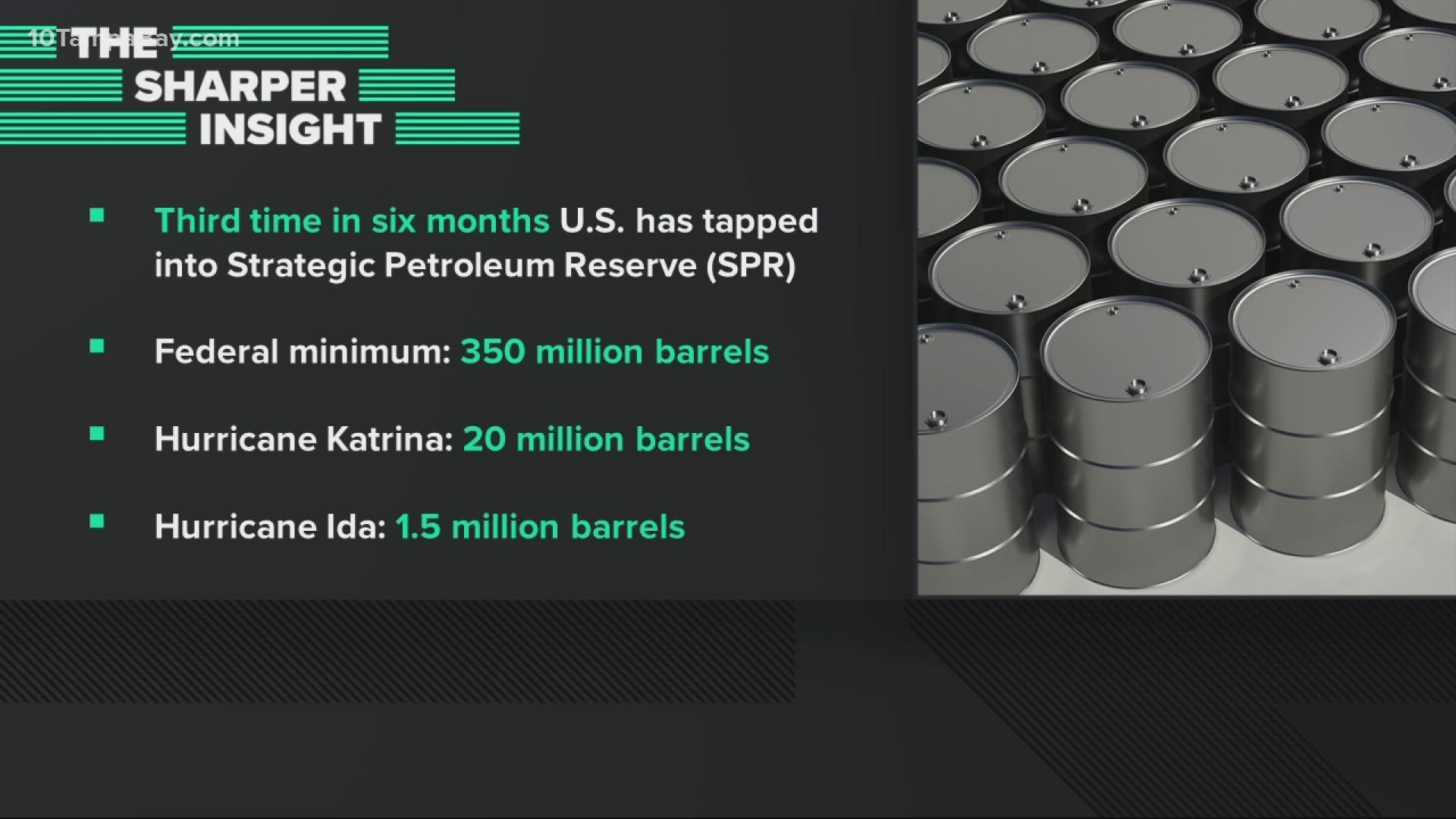ST. PETERSBURG, Fla. — To bring down rising gas prices, the federal government is now releasing 1 million barrels of oil a day through October from the U.S. Strategic Petroleum Reserve.
It all adds up to about one-third of the entire U.S. oil reserves – the largest release in U.S. history – ultimately putting it at its lowest level since 1984, according to GasBuddy petroleum analyst Patrick DeHaan.
Prior to the authorized release, the reserve was holding about 586 million barrels.
President Biden said it will be replenished as oil prices come down. But could such a large draw-down of the oil reserves have unintended consequences if there is a severe hurricane season?
Often, the reserves are tapped after a severe hurricane interrupts production.
We asked DeHaan if it puts us in a susceptible spot, given the start of the season is fast approaching.
"It's a little bit worrisome because obviously, we have less oil in the reserve, that means we have fewer tools should another emergency arise,” DeHaan said.
But even if our oil reserves are depleted to around 380 million barrels, DeHaan says that’s still plenty of oil. The federal minimum is around 350 million gallons.
“As an analyst, you’re always looking at where this withdrawal will put us. Will it put us further at risk?” he said. “But we’re also aware that oil prices are very high and this can be a very effective tool if done right to supply to a global market with the oil it needs.”
How does the Strategic Reserve work?
The Strategic Petroleum Reserve (SPR) can hold more than 700 million barrels of oil in four government-operated complexes with deep underground storage caverns created in salt domes along the Texas and Louisiana Gulf Coast.
It was established in the mid-1970s in response to the oil crisis and is managed by the Department of Energy.
The reserve has been tapped for various reasons, from offsetting the impact of hurricanes and ship-channel closings to raising money for deficit reduction.
The U.S. Energy Department either sells the oil outright or swaps it with oil companies that are required to return it with interest.
In 2005, during a record-breaking hurricane season, the president authorized an emergency release of 20 million barrels of oil after Hurricane Katrina.
Roughly two million barrels were released last year after Hurricane Ida.
This latest release marks the third time in six months the U.S. has tapped the SPR.
Back in November, he ordered the release of 50 million barrels of oil. Then, in his state of the union speech in March, Biden announced another 30 million barrels as part of a multi-nation effort to boost the oil supply.
The Associated Press contributed to this report.

